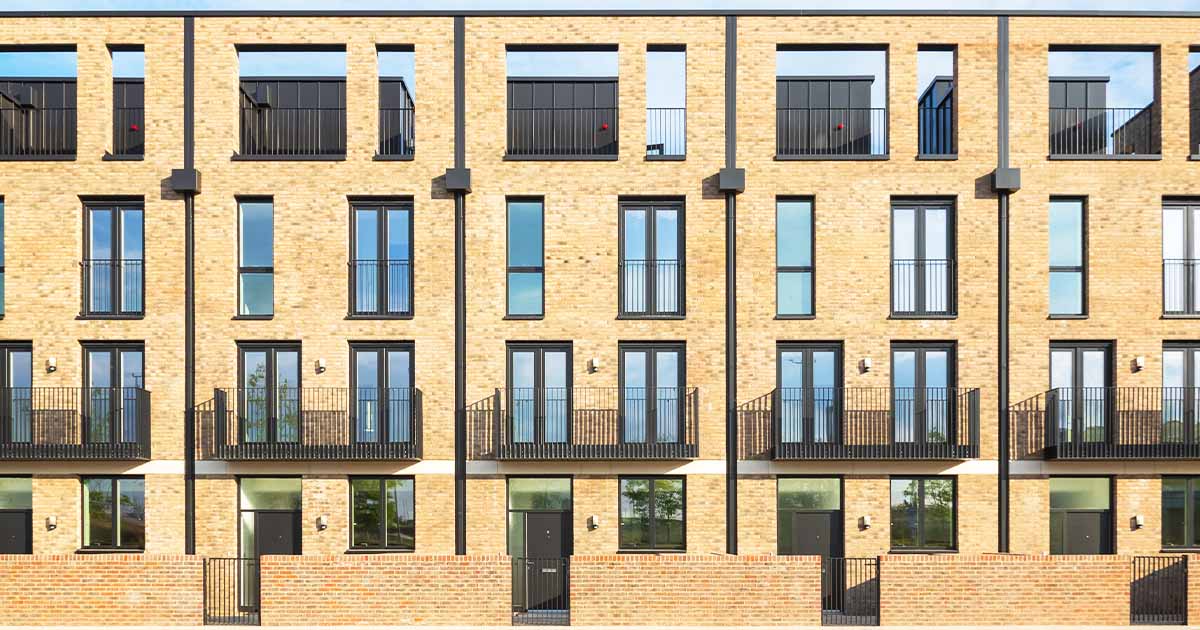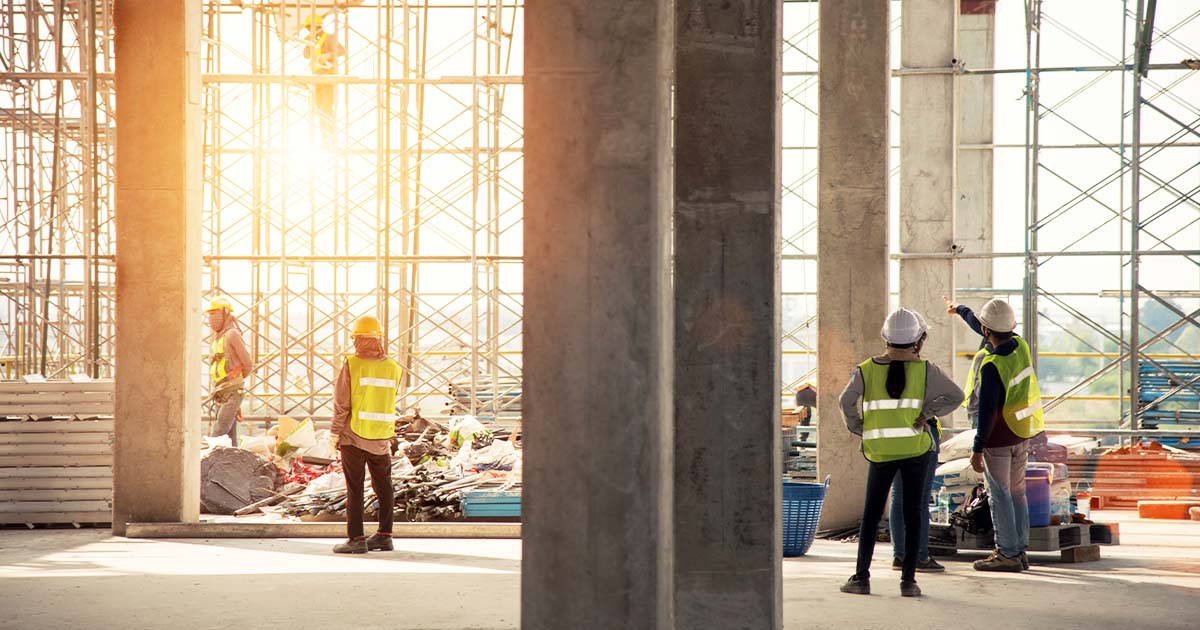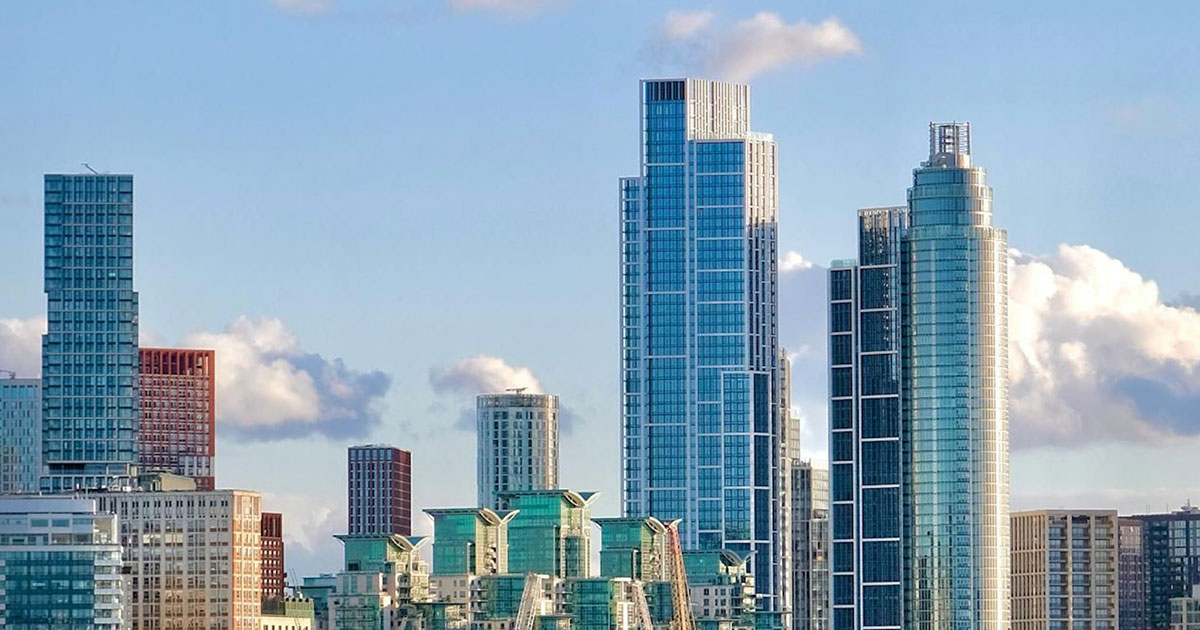Second staircases mandatory in residential buildings over 18m from 30 September 2026

The Department for Levelling Up, Housing and Communities (DLUHC) has published its long-awaited guidance on second staircases in residential buildings in England. The update to Approved Document B brings certainty for developers navigating this area. Residential buildings over 18m will be required to have two staircases from 30 September 2026 save for those that at this date are “sufficiently progressed.”
Updates to Approved Document B
The updates to Approved Document B (the Government’s building guidance covering fire safety) were published on 29 March 2024. They confirm that all new blocks of flats over 18 meters being built from 30 September 2026 will be required to have two staircases.
There is an exception to this requirement where:
“a building notice or an initial notice has been given to, or a building control approval application with full plans made to, the relevant authority before 30 September 2026 and either the building work to which it relates:
a. has started and is sufficiently progressed before that day; or
b. is started and is sufficiently progressed within the period of 18 months beginning on that day.”
‘Building notice’, ‘initial notice’ and ‘building control approval application with full plans’ have the meanings defined in the Buildings Regulations 2010.
Building works are “sufficiently progressed:”
a. where the building work consists of the construction of a building, when the pouring of concrete for the permanent placement of the trench, pad or raft foundations has started, or the permanent placement of piling has started; or
b. where the building work consists of work to an existing building, when that work has started;
c. where the building work consists of a material change of use of a building, when work to effect that change of use has started.”
Background to the Two Staircase Policy
The second staircase policy was first announced by the Government back in December 2022. Then it was proposing to mandate second staircases in blocks of flats over 30 meters. The new policy was a response to the Grenfell tragedy in 2017 and growing public concerns about building safety standards.
public consultation, DLUHC announced the Government’s intention to lower the proposed height threshold to 18 meters. This reflected the views of industry experts including the National Fire Chiefs Council and the Royal Institute of British Architects.
DLUHC acknowledged the development sector’s call for “coherence and certainty,” and promised further guidance as the Government moved to bring England in line with many countries in Europe, North America, and Australasia where second staircase in tall buildings are already mandatory.
On 24 October 2023, DLUHC provided a further update confirming that there would be a 30-month transitional period from when the new guidance was published.
Planning considerations
Building Regulations are not expressly considered as part of the determination of a planning application. However, legally, buildings must comply with the relevant Building Regulations standards when they are built. It is essential therefore that the planning permission reflects the Building Regulations anticipated to be in force at the time of construction.
However, from a planning perspective, the update is no more than a technical formality with second staircases already being treated by planning officers and planning committee members, particularly in London (following the Mayor’s announcement in February 2023), as a requirement for planning applications for new tall buildings over 18m.
The uncertainty around when the new two staircase requirement would come into effect, and at what height, has therefore meant that many development proposals have been on hold. A delay many developers cannot afford in the current economic climate of rapidly rising construction and borrowing costs. It is predicted that in London alone, it has delayed the delivery of at least 38,000 homes.
Revising a scheme to add a second-core often results in the need for a substantial redesign and often impacts on unit numbers and the proposed mix of unit sizes. It is unlikely these changes can be dealt with as a non-material amendment by the local planning authority, and therefore means a variation (s.73) to the original permission is required. This involves a new round of public consultation and where relevant, in London, referral to the Mayor. This is a risk as it can open up the principle of development for reconsideration which may no longer be acceptable, or viable for the developer, if the planning policy position has changed. The redesign itself may also have already impacted on rental/sales values and viability given the addition of a second staircase will reduce the development’s utilisable internal areas.
Future considerations
It is yet to be seen whether there will be any material impact on the value of single-core assets going forward. Currently, it is understood, that the lack of supply to meet demand is meaning that the market remains good for single-core assets which have effective safety measures.
However, how this plays out in the long-term will be interesting. Those holding dated single-core assets, which cannot be reconfigured, may be facing potentially extensive capital expenditure to upgrade their safety systems and depreciating values in circumstances where fire safety risks cannot be appropriately mitigated.
Institutional owners, funds cognisant of reputational-risk and end-users themselves are also driving demand for second staircases. There seems to a general public perception now that one staircase is “dangerous” and two are “safe.” Industry experts consider this to be an over simplification, which fails to consider building safety in the round; a criticism which has been expressly levied at the Government’s updated technical guidance. Experts state that a box-ticking exercise will not necessarily result in safer buildings, nor, is it always necessary for there to be two staircases, where other safety systems can be effective.
For more thoughts on this, please see Charlotte Youngs’ (Senior Associate, Commercial Real Estate) blog on the topic here.





